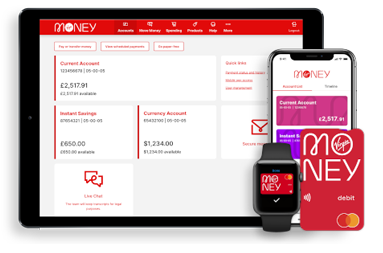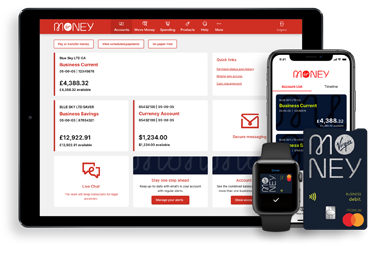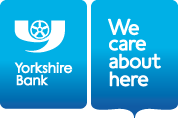-
Login
More Login links
Internet Banking
Business Internet Banking
Started an application?
Other services
Help
-
Register
More Register links
Internet Banking
Business Internet Banking
Other Services
- Our Products More business product links
Bank accounts
- Business current account
- Business choice account
- Switching business accounts
- Compare all business accounts
Savings accounts
Loans and Finance
- All Treasury solutions
Treasury solutions
Help and support
- Online Banking More online banking links
BusinessOnline
- Commercial More commercial business links
Business enquiries
Contact us about a general enquiry.
- Corporate and Structured Finance More corporate business links
Corporate and Structured Finance
SME Cashflow Finance
Unlock your cash flow potential. At Yorkshire Bank we take a flexible approach to business borrowing.
Lending is subject to status and eligibility.
- Our Sector Expertise More sector expertise links
Know your customers and grow your business
< back to all business news articles
08/03/2018
Many small businesses have a limited advertising budget. If you know and understand your customers, you’ll get the best return for your advertising spend, focusing your time and money marketing to those more likely to buy from you, and marketing in a way which appeals to your existing and new customers. As the way we receive information is constantly changing, evaluating how to best reach your market should be an ongoing process.

For example, you might discover customers find your weekend opening hours (or lack thereof) inconvenient, or feel their emails or phone messages are not responded to promptly enough. If you’re in a service industry, are customers telling you they would be happy to pay extra for a drop-off or delivery service, if you offered this? Aim to immediately fix problems that can be solved at little or no expense or inconvenience to you, and brainstorm ways to address the more complicated issues.
Methods for getting to know your customers
If you have done some research and established there are people who do want to buy your products or services, you should then ask yourself:
- What are the demographics of the people likely to buy my products and services? Age, income bracket, occupation, and area where they live.
- How do my products or services beat my competitors? Your competitive advantage which encourages customers to choose your business rather than someone else’s.
- How do my typical customers prefer to get their information? From newspapers, radio, magazines, direct from you or online?
Collecting this information will start to build a picture of how to promote to them, what tone of voice to use, and who you may wish to partner with to run joint campaigns.
All the answers you gain will help you determine how to best target your marketing and provide information which will help you fine tune your ideas. For example, if you’re targeting young female professionals, there’s little point in having your glossy catalogue included as an insert in a magazine largely read by women aged 50-plus (and vice versa). If you’re selling top-end luxury products, will community newspaper advertisements really fit the image your business wants to portray, or would you be better off advertising in special interest magazines or on websites relevant to luxury consumers?
Direct feedback
To get to know your customers better, ask customers directly to gain more insight and use online, in-store or email surveys to find out other relevant information.
Focus groups are great for finding out what customers like about your business and what they feel could be improved. You will probably already know the typical age bracket and gender of your customers, but when it comes to the more direct questions, you can also ask:
- What are their interests?
- How did they first hear about your business?
- How would they prefer to receive information about your business?
- What new products or services would they be interested in?
- What would they like to see improved?
- Who are the closest competition and what do they like about them?
Each of these questions will provide opinions rather than statistics.
Opinions help you learn more about your customers’ habits and preferences and how you can best reach them with your marketing. For example, regular newspaper advertising would be a waste of money if your customers prefer to find information online. If customers think your service is the best in town, you could start highlighting this in your advertising and on your website.
Remember to always take note of what happens after you have carried out an advertising or marketing campaign, to see what works and learn from what doesn’t.
Bringing in the experts
If you have the money to outsource your customer and marketing strategies, find a company with a proven track record, whose skills match what you want to achieve. Google search or ask other small business owners for referrals.
Ask these companies what they specialise in and can they supply testimonials or show you case studies of what they’ve achieved? In addition, make sure you are clear on fee structures before you sign anything so there are no surprises.
Summary
In addition to helping you plan an effective marketing and advertising strategy, knowing your customers and what they think about your products and services enables you to tweak and change your business to meet customers’ needs.
Successful businesses make the effort to learn a lot about their customers and then act on that knowledge. The golden rule is: ask lots of questions and make sure you take action on the feedback you get.
Always bear in mind markets can quickly change as technologies become obsolete, the government introduces new legislation, competing products hit the market, and for many other reasons out of your control. The better you know your customers and their changing needs and preferences, the better prepared you'll be for possible changes.
POSTED IN: Marketing,Growth
SHARE
Related Articles
You are here: Business Banking > Business News > Articles
- About Yorkshire Bank
- About us
- Virgin Money UK PLC
- Media relations
- Careers
- Modern Slavery Statement

Internet Banking has moved
To log into Internet Banking you now need to use Virgin Money Internet Banking. You'll get the same great service and are able to access all your accounts.
Your log in details will stay the same and you can log in directly from the shiny new Virgin Money website.
Continue to Virgin Money Internet Banking
Go to the Virgin Money website
Be Alert
Never tell anyone a token 3 response code, even someone from the bank. You should only input these codes to our secure Business Internet Banking service when you’re sending and making payments. If anyone calls and asks for a token 3 response code or asks you to authorise a payment on the App for fraud checks, hang up and call us on 0800 085 2914 from another line if possible, remember the Bank will never ask you to disclose your security details.
Continue to Virgin Money Business Internet BankingYou can find impartial information and guidance on money matters on the “MoneyHelper” website.
Yorkshire Bank is covered by the Financial Services Compensation Scheme (FSCS), Find out more.
